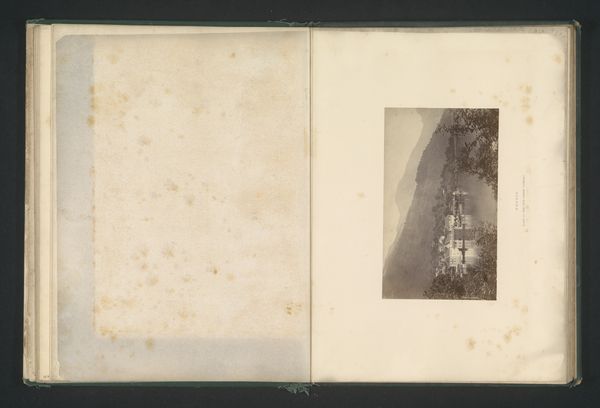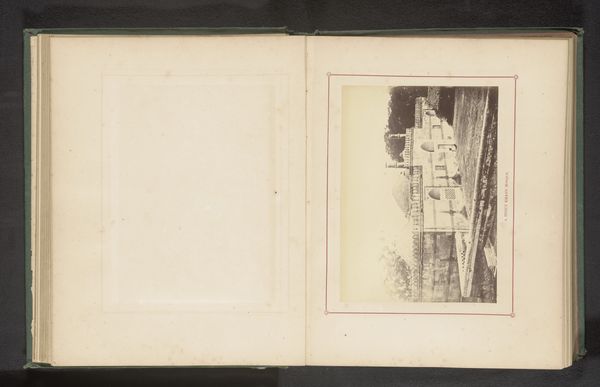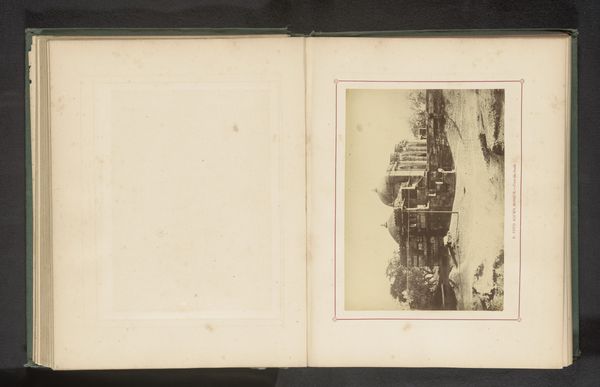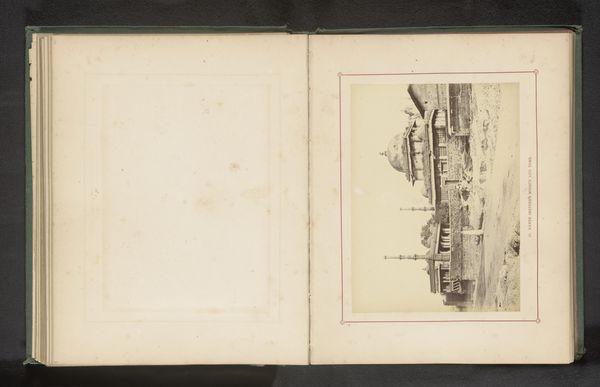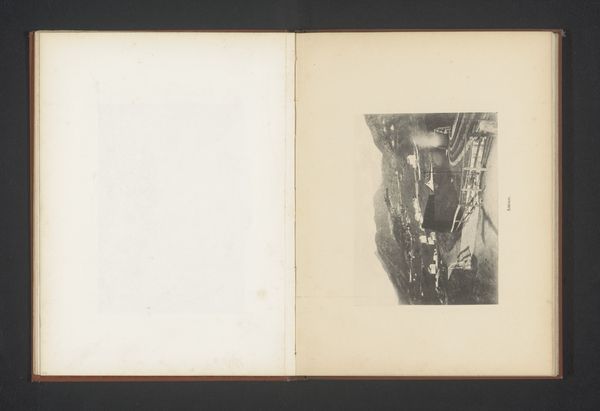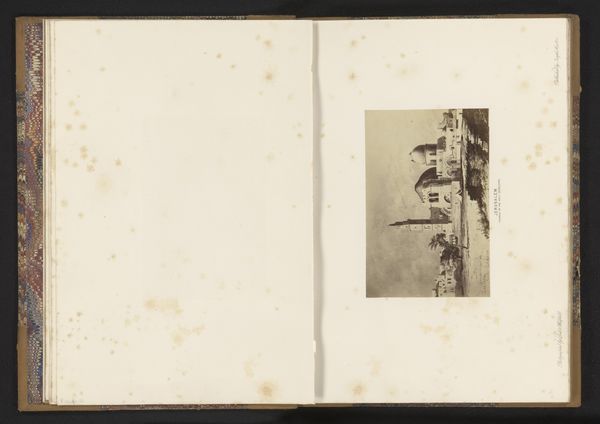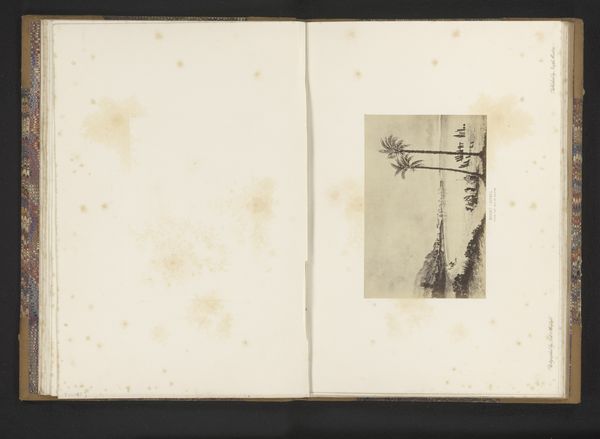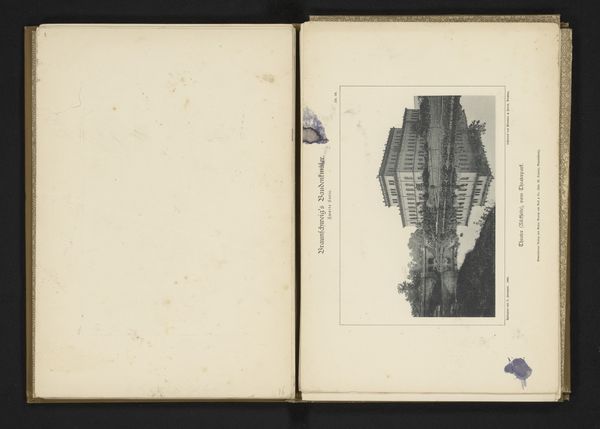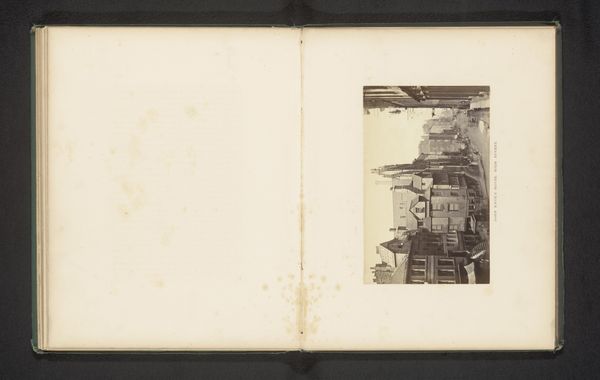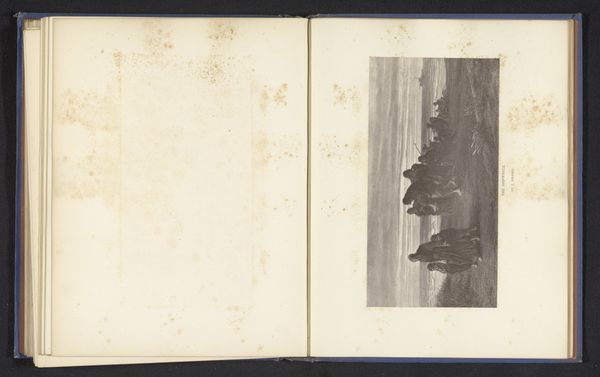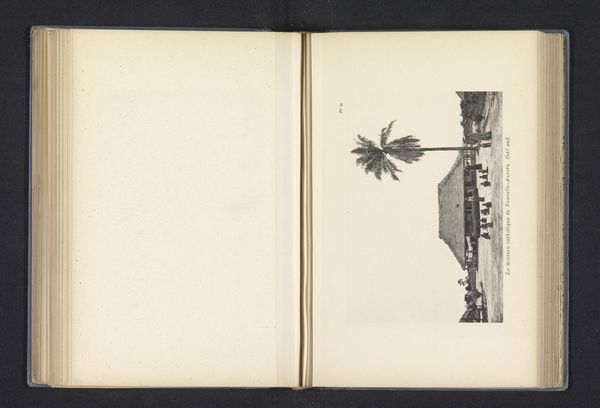
Opstelling van Eadward Muybridge voor het fotograferen van rennende paarden before 1882
0:00
0:00
print, photography, gelatin-silver-print
# print
#
landscape
#
photography
#
gelatin-silver-print
Dimensions: height 127 mm, width 214 mm
Copyright: Rijks Museum: Open Domain
Curator: Before us, we have "Opstelling van Eadward Muybridge voor het fotograferen van rennende paarden", a gelatin silver print created before 1882 by the pioneering photographer, Eadweard Muybridge. Editor: It feels remarkably... staged. The landscape is very still, and the structures create an almost artificial framing of space. There's a fascinating contrast between the anticipated action of running horses and this tableau's immobility. Curator: Indeed. Muybridge meticulously engineered this setup. Look closely at the architecture, the parallel lines leading into the distance, the placement of cameras designed to capture motion. He's deconstructing movement itself through this structured visuality. The arrangement speaks to a particular gaze of empirical science of the time. Editor: Absolutely. And this "capture" reflects societal obsession with science’s role in shaping, codifying and thus “understanding” the human or natural world. Muybridge was deeply involved with the scientific and academic milieu that shaped modern institutions. He also was taking an active role in establishing motion studies that came to influence design and technologies to follow. Curator: Beyond scientific rigor, I see aesthetic intent. Consider the subtle gradations in the grayscale, the tonal contrasts. Even the clouds above. Muybridge transforms the study into art using light and geometry to imply something almost sublime despite being objective documentation. Editor: Well, what becomes documented, how, by whom is never “objective”. By producing the image as art, he was already establishing the ground for how this historical process would be received—which includes considering the effect it has even now. Curator: You're right to bring up that perspective on photographic vision, and on Muybridge. Seeing this artwork through these interpretive frameworks definitely creates additional entry points and appreciation. Editor: It's these details in composition that show the context from which it originated—that are vital.
Comments
No comments
Be the first to comment and join the conversation on the ultimate creative platform.
